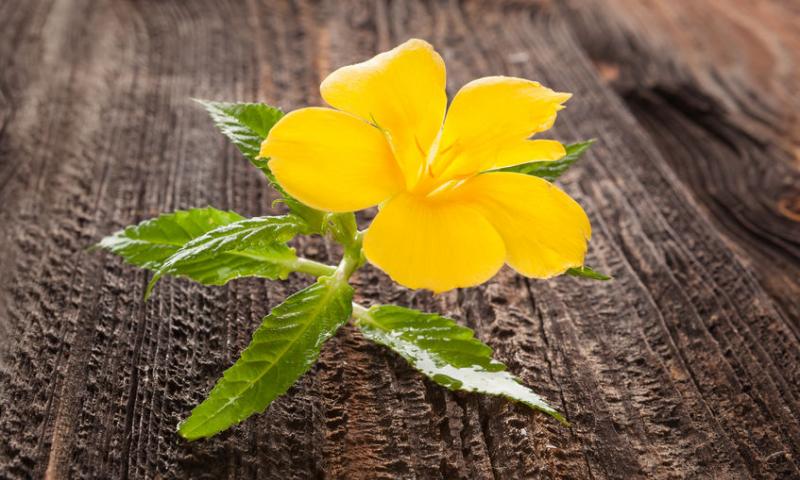 />
/>
COMMON NAME: Damiana
LATIN NAME: Turnera Diffusa
ORIGIN: USA
HABITAT: Turnera Diffusa covers almost the entire territory of the Gulf of Mexico, the plant grows everywhere in Central and South America, and also on the territory of the Caribbean Islands. Damiana is mainly cultivated and industrialized in the northern regions of Mexico and most territory of California.
BOTANICAL INFORMATION: Turnera Diffusa is an evergreen perennial shrub reaching a height of 50-100 cm. Turnera species belongs to Tumeraceae family.
Turnera Diffusa is a perennial shrubby plant, reaching a height of 50 to 100 cm. The stems are thin, upright, and red-brown in color. The elongated leaves are alternately arranged on the stems. Leaf plates have teeth along the edge. At the base, there are two small tubercles - nectar glands. Flowering begins in early spring. The flowers of Turnera Diffusa is yellow, five-toothed. The fruit of the plant is a small-sized box in which small seeds with a pitted surface ripen. The flowers of Damiana are fragrant, as well as the fruits. Turnera Diffusa propagates by seeds. It is widely cultivated as a houseplant.
CHEMICAL COMPOSITION: The chemical composition of the plant is quite rich. There were found: essential oil, which contains cineole, paramycin, alpha and beta pinene, thymol, cimol and sesquiterpenes (alpha-copaen, calamen and cadinene). The leaves contain chlorophyll, tannin, alkaloids, resin, protein, solid resin, starch, flavonoids, arbutin, fatty oils, sugar, acids in small amounts, phosphorus, cyanogenic glycosides, beta-sitosterol, gonzalitosin, damianin (bitterness). In addition, caffeine was found in the stems.
INTERESTING FACTS:
- A missionary Juan Maria de Salvierra managed to describe the plant for the first time in 1699.
- The beneficial properties of Turnera Diffusa were known even during the Zapotec and Mayan civilizations. At that ancient time, it was an integral component of the diet and was especially often used when performing long ritual dances, the duration of which could be 2-3 days.
- The leaves of the plant serve as an excellent seasoning, especially popular in Mexico, where they are widely used for flavoring tea and liquor.
- The Austrian botanist Schult made the first botanical description in 1820.
- In Europe, the herb appeared only in 1880.
- The name of the herb was given after the Christian, the holy martyr Damian.
- The rhizome of herb was actively used in the music industry. It helped to improve the sound of the flute.
- A French wine coca drink was made from Damiana. John Steez Pemberton invented it. This man was also the one who created Coca-Cola.
*This article is for informational purposes only. We suggest consulting a physician before using these or any other herbal supplements.
